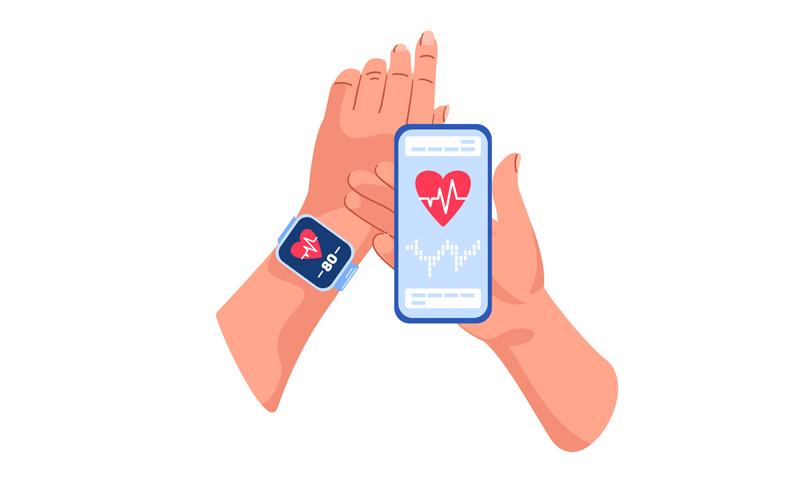Cuffless device may revolutionize hypertension management





A retrospective analysis shows that continual cuffless blood pressure (BP) monitoring may facilitate rapid and practical assessment of systolic BP (SBP) time-in-target range (TTR), an emerging metric of hypertension control.
“BP TTR is poised to become a cornerstone in hypertension management and risk stratification, but to date, this new metric has been derived only from infrequent measures,” the researchers noted. Also, the frequent BP readings required for TTR could be cumbersome to patients, and the duration and frequency of BP measurements necessary to calculate TTR in clinical practice have yet to be ascertained. [J Am Coll Cardiol 2021;77:1300-1301]
The study evaluated over 2.2 million BP readings from 5,189 individuals (average age 55.3 years, 82 percent men) who used a validated cuffless wrist BP monitor (Aktiia) that constantly recorded BP between January 2021 and September 2022. The first consecutive 15 days were selected for each subject (at least six daily daytime readings). The monitor collected an average of 29 readings daily, averaging 434 readings from each patient over the 15-day period.
Using SBPs obtained over 15 days, a reference TTR was calculated for each participant; based on this, they were stratified according to cardiovascular risk*: high (group A), intermediate (groups B and C), and low (group D). The risk stratifications were then compared against those generated via conventional measures using the ‘One-Week-Daytime’** and ‘One-Day-24 h’*** TTR monitoring schedules.
Based on the reference TTR (SBP 133.8 mm Hg), 63 percent of participants were group A, 10.3 percent were group B, 8.7 percent group C, and 18 percent group D. [Front Med (Lausanne) 2024:11:1396962]
Compared with the reference TTR, the ‘One-Week-Daytime’ and ‘One-Day-24 h’ monitoring methods misclassified 45 percent and 26 percent of participants, respectively.
The ‘One-Week-Daytime’ average SBP was significantly higher than those during the 15-day and ‘One-Day-24 h’ periods (p<0.0001 for both), but the latter two were similar (p=0.828). “[This implies] that TTR is highly dependent on the schedule and strategy used to measure SBP over time. At least 1 week of 24-h continual monitoring was needed to identify a subject’s BP risk with TTR at 90-percent sensitivity, which can only be achieved in practice with cuffless BP devices,” the researchers explained.
A paradigm shift in BP monitoring
One in every two adults is hypertensive, but only one in five patients have their BP under control. [https://www.who.int/news-room/fact-sheets/detail/hypertension, accessed January 2, 2025] This underlines the need for innovative approaches for BP management. At-home monitoring is highly recommended due to inaccuracies rendered by in-office readings, such as masked hypertension or white coat syndrome.
“The successful management of hypertension depends on patients being able to take BP measurements easily and reliably outside of the traditional doctor’s office setting,” said lead investigator Dr Naomi Fisher from Brigham and Women's Hospital, Boston, Massachusetts, US, in a news release.
“Cuffless devices have the potential to revolutionize hypertension management. They provide many more readings than traditional devices, both day and night, which can help confirm the diagnosis of hypertension and guide medication titration,” Fisher added.
“For the first time, by using a cuffless device, we can collect continual out-of-office BP readings and use these data to calculate a new metric, TTR, which shows great promise as a predictor of risk … The use of cuffless devices could create a shift in the paradigm of BP monitoring and hypertension management,” she said.
Studies have validated the use of the device, which is available over-the-counter in the UK and Europe but has yet to receive the green light from the US FDA.
“The employment of cuffless BP devices in future studies should allow improved assessments of hypertension control, and their use in clinical practice and research may innovate hypertension management,” concluded Fisher and colleagues.